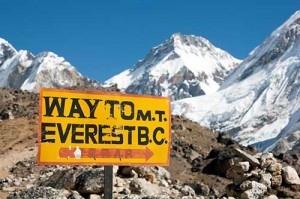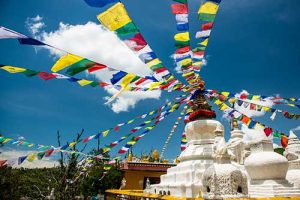I’m sure everyone is aware you have to be relatively fit to do this trek. I was told you don’t need to be the ultimate athlete (I’m most definitely not!); you just have to make sure you’ve had some form of physical preparation for a few months before your trek. After speaking to friends who have done the trek, I was advised some trekkers train for an entire year prior to the trek however, if you do regular exercise and are relatively fit, you should be fine. I hope so as I definitely don’t have a year to prepare. In my own preparation I have done a bit of running, walking and interval training with a colleague three times a week. I definitely feel that this has increased my level of fitness. I’m generally an active person so I mainly needed to increase the intensity of my run/walk and extend it for a few extra kilometres as endurance training. Also about a month before the trek we decided hired a personal trainer to help us along and to push us just a little further. He mainly focused on cardio and straight training and I feel much more confident about getting to Base Camp comfortably.
Cycling and swimming 30 -60 minutes 3 to 4 times a week are also great alternatives, as is just about anything that gets your cardio working.
As you can imagine there is a lot to organize and a lot to consider. Here are some ‘need to knows’ about preparation for the EBC & some advice I received from friends.

Depending on the time of year you go, you’ll need suitable gear. Firstly and most importantly I need to mention trekking boots. They have to be fitted professionally by someone who knows what they are doing. One of my friends bought a pair of ill fitted boots (after being fitted by a “professional”) for a trek in the Grand Canyon and unfortunately she could not complete it due to bruising and blisters upon blisters. It ruined her holiday. No amount of blister patrol is going to help you if your boots are either too big or too small.
Next have to be thermal underwear, jacket and pants. I’ll be travelling in April so its spring time in Nepal and the weather should be dry but cold. I decided to take 2 pairs of thermal underwear, a pair of compression tights (to increase circulation and blood flow to the muscles), a pair of hard shell pants (waterproof and breathable) and of course a good quality down jacket. Gear has been the biggest monetary outlay next to the trek itself and flights however, I don’t think you should compromise on quality when undertaking a trip of a lifetime.

Having said all that, you can have the greatest gear in the world but if you don’t have the fitness and mental preparation behind you, your chances of completing the trek and very slim.
As I mentioned, you don’t have to be a professional athlete to do the trek, in fact, you probably don’t have to prepare at all if you are a fit person but let’s face it; we could all be a little fitter. Physical preparation will probably save a lot of pain and suffering on the trail and help you enjoy the experience much more. The common theory to all training is pushing yourself and building physical and mental discipline.
Happy and safe trekking.

